Fry- Indigo- Vray- Kerkythea- Maxwell- Podium (added page2)
-
Hi people,
I ran this exterior scene through different render engines.
All had some color/light balancing in Pshop.This is not meant as a comparison thread between render engines. Just an exercise on using them.
Feel free to comment...
Cheers,
Kwistenbiebel1.FRY
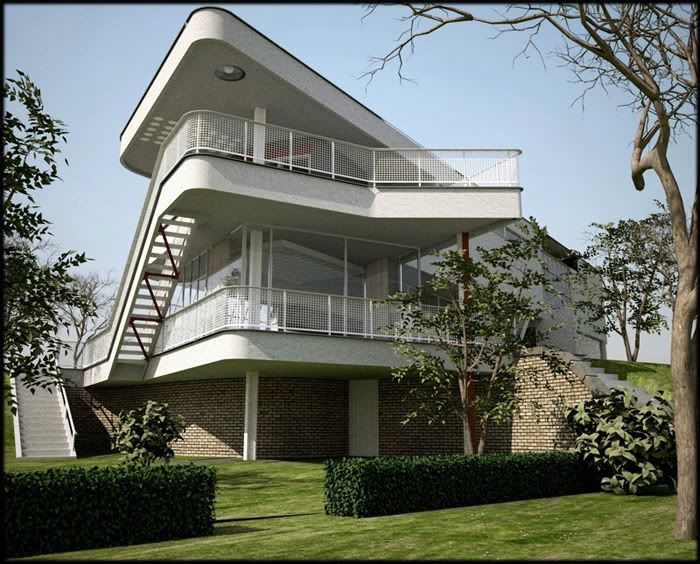
- INDIGO
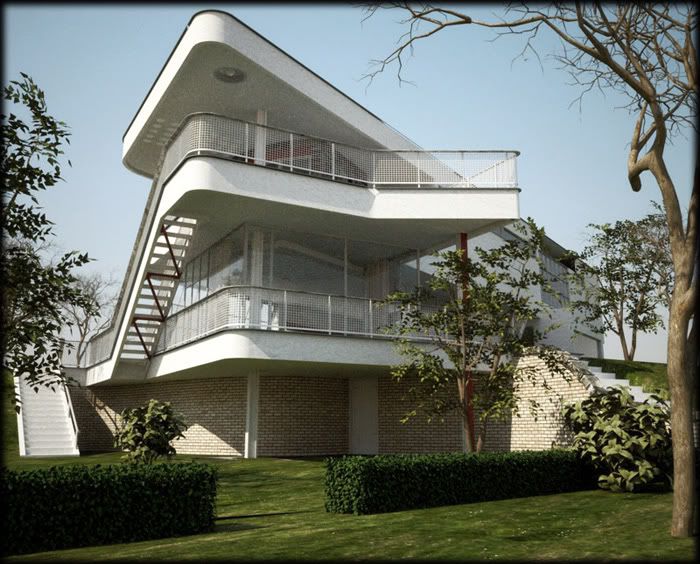
-
- MAXWELL
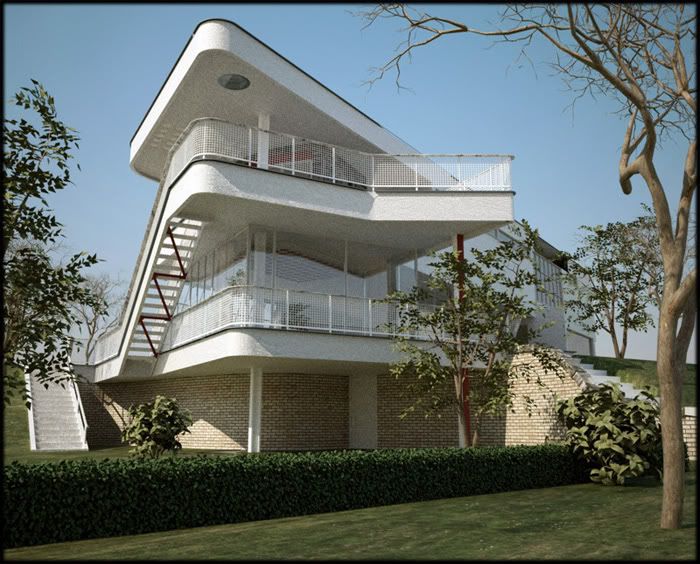
-
- VRAY
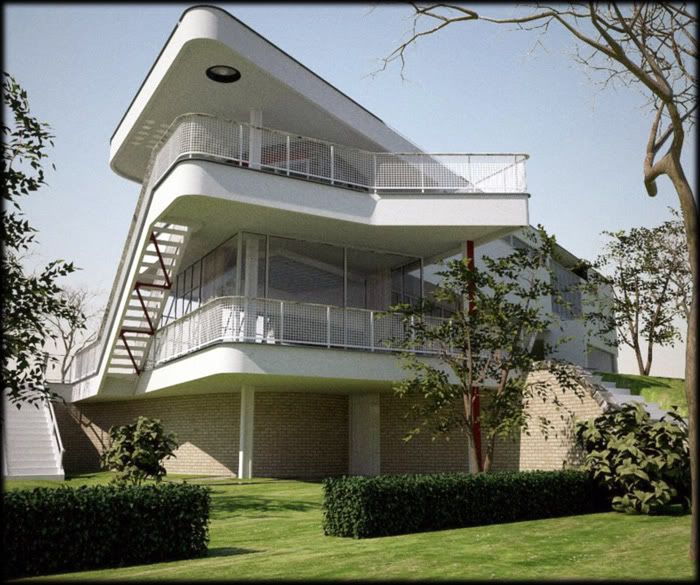
-
- KERKYTHEA
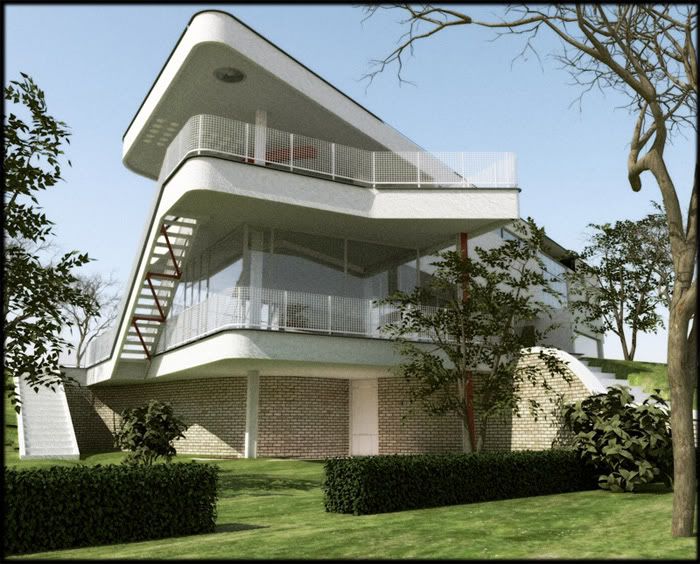
-
I'm interested in the rendertimes?
-
I hope to make a Podium version soon and add it to the series.
-
@unknownuser said:
Thanks!!
Interesting how close they are. Which of the renderers do you default to most often?They are close because I tonemapped them afterwards to my liking.

It's difficult to say which render engine I use most. It depends on the scene that needs to be rendered. Often I make quick test renderings on low res using different engines and then pick the one that gives the most pleasing output to elaborate further.
I must admit that I don't use any of the 'unbiased' render engines (Fry, maxwell, indigo, KT unbiased) when I need to do an interior scene. It just takes way too long.When I need results fast, Podium is my friend. I hope to include a Podium render later on (I had some trouble using Podium for this scene as it is a 140 MB file but I'll give it a second try).
All render engines could export the scene (140 Mb) without flaw except for the SU2KT exporter which made my Pc come to a stall so I exported the scene in 10 different pieces to Kerkythea (took me ages).
The fastest exporters were Vray,Fry and Indigo.
The Maxwell one worked well but it took more than 1/2 hour to get it exported. -
Very nice - all of them! Looking forward to the Podium version. Big file, though. Might cause a splat. Would make a fine test file, eh?

Dig the model too. I've always liked that house. No luck on finding anything by Scharoun in the Warehouse, though. This from PPB?
-
Great renders Chris. Also nice to see the Schminke House by Hans Scharoun....romantic part of early international style.

-
Thanks Stinkie and sepo

This is the Sketchup screen.
I only set up 3 materials for each render engine : the glass, a bump map for the plaster and a 'plastic' material for the painted metals. I used the default 'thin glass' or 'ghost glass' settings for the single faced glass panels for all render engines except for Indigo where I used a 'glossy transparent' (Indigos thin glass can only be applied to double faced glass).The model of the house is Evermotion (I got help to get it converted from Max to SU).
The vegetation is all 3D and imported as .3ds.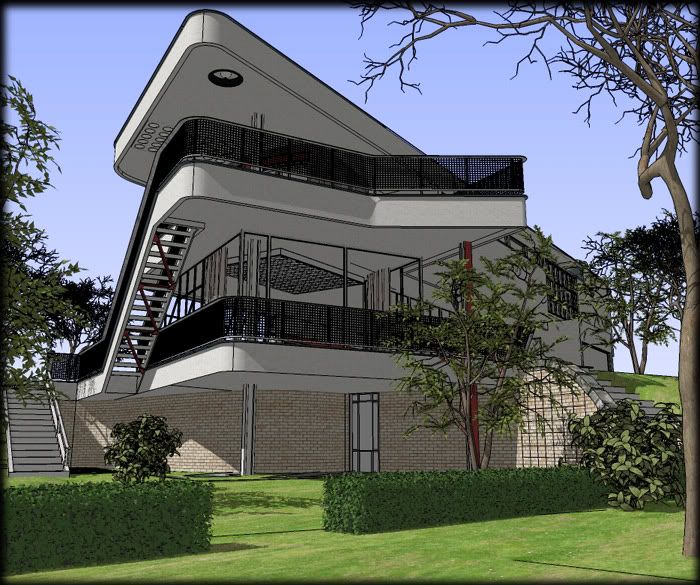
-
I don't remember all the render times unfortunately...but I can give a clue.
Ranked from short to long render time for this scene:
- Vray : about 45 minutes 'universal Vlado settings)
- Fry : about 1 hour 'default' + 45 minutes 'aeronoise' for the difficult parts
- Maxwell: about 2 hours
- Kerkythea: about 3 hours (I used the MLT (bpt) setting but I think PPT would be quicker
- Indigo: about 4 hours
note: some of the images should have rendered longer to go clean so this is not a good comparison on render speed.
-
Very interesting...

Although - and as you've already mentioned - I would never use the MLT/BiPT in Kerkythea for a scene like this...
It should be clear in less than 1 hous using PTP (no. 17)Would you mind share that scene..??

I'm sure you know my e-mail address...
-
Thanks frederick,
I am sure progressive path tracing would be quicker...I just had to try out the 'new' option MLT(bipt)
E-mailing a 140 MB attachment ? I think that's going to be difficult.
-
put your 140 meg here (200 is the max) so cool and your own data base max is 5 gigas

http://www.divshare.com/ works very fine and it's free of course!
How many times render in prog like Modo?
-
Thanks for such testing!
For me, outdoor scenes - only unbiased renders(indigo and maxwell, i try fry-r but don't like it) and i take more time(for drafting, modelling and rendering) from client...indoor only by biased - vray, some render-setting in kerky(also in cinema4d, same- vray for static, final-render - interior animation)
-
@kwistenbiebel said:
I used the default 'thin glass' or 'ghost glass' settings for the single faced glass panels for all render engines except for Indigo where I used a 'glossy transparent' (Indigos thin glass can only be applied to double faced glass).
I can't comment on your images because they are blocked from my office computer. However, if you used glossy transparent glass on your windows, that may explain the longer Indigo render time. You are actually mistaken. Indigo Thin Glass is designed to be applied to a single faced glass panel. Glossy Transparent requires double faced glass and usually results in much longer render times.

-
Oops

Thanks for pointing this out Whaat.
I only recently started using Indigo again as you know so I am still searching my way.
When I find time (weekend?) I'll try your suggestion on the use of thin glass.
Also it could be that I didn't use the best optimised render settings (I used 'hybrid') so maybe another setting will improve the render time.Cheers,
Kwistenbiebel -
@kwistenbiebel said:
I didn't use the best optimised render settings (I used 'hybrid') so maybe another setting will improve the render time.
Hybrid should theoretically be the fastest but it has been known to be one of the slowest (I don't think Onosendai has optimized it yet). I would try one of the other settings and compare the render times (if you can find the time this weekend...
 )
) -
Nice exercise. I have been wanting to do something similar for a long time to better understand idiosyncrasies of diff. rendering engines, mainly indigo/vray/podium for me, but never found time...not even on a weekend..

really impressed by vray time vs indigo time.
Thanks! -
Kwistenbiebel,
A great comparison. You seem to be a master of all rendering engines-the lighting was very realistic in every one. Only the Kerkythea one seemed to have too much light reflecting from the grass.
All the similar comparisons I have seen in the past have shown the author to be either biased toward his/her favourite application, or then that he/she has clearly not known how to use some of them. This time this has not bee the case.
I would like to hear your comments about the usability of the different systems, and how difficult you find the setting up required to get these outstanding results.
Anssi
Advertisement







